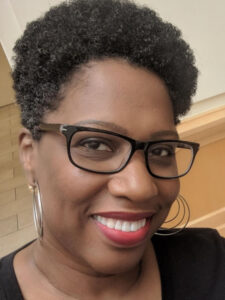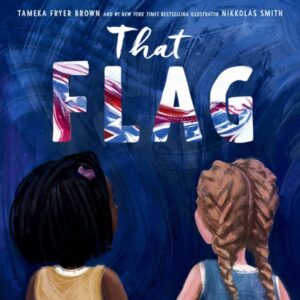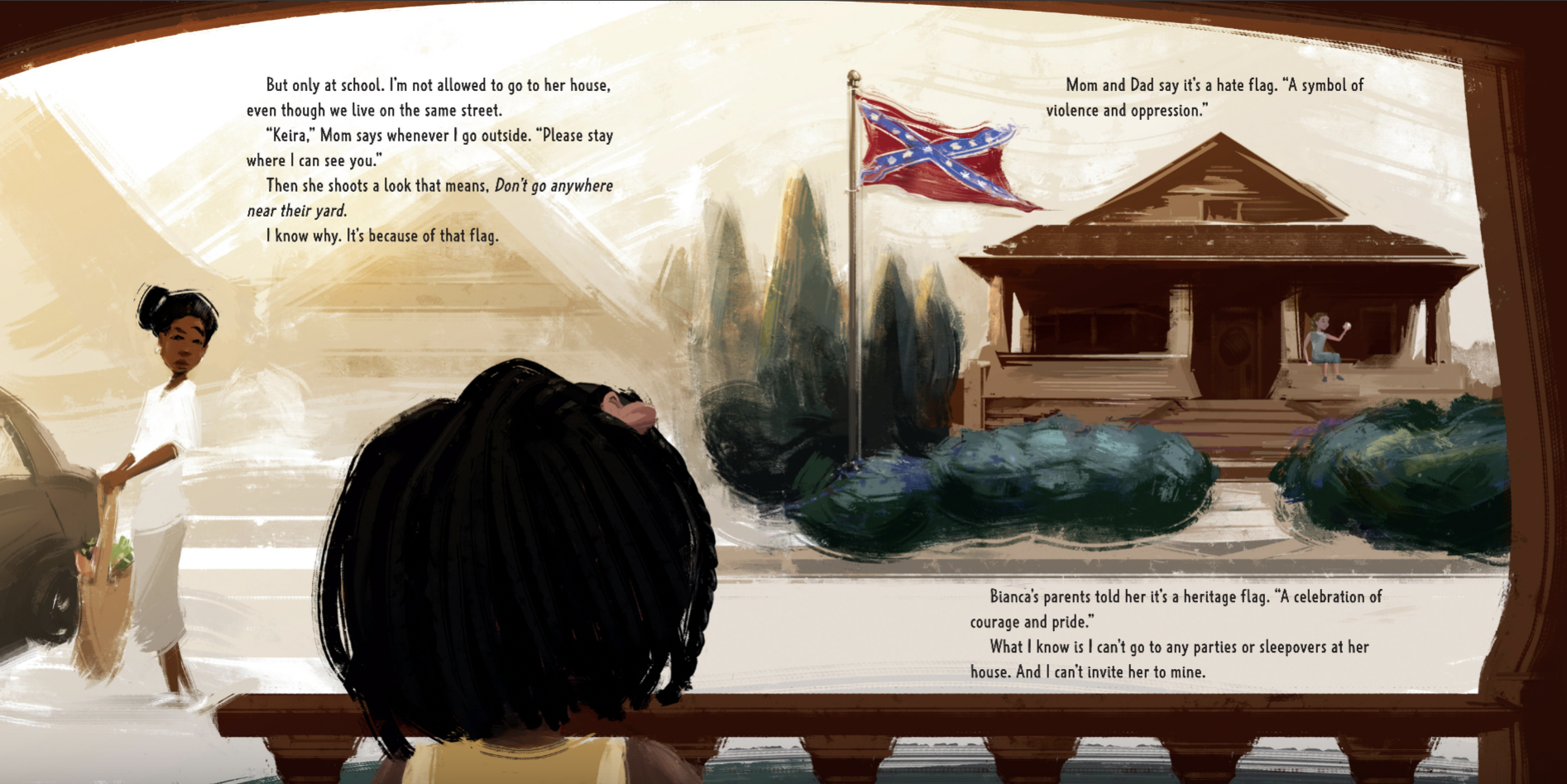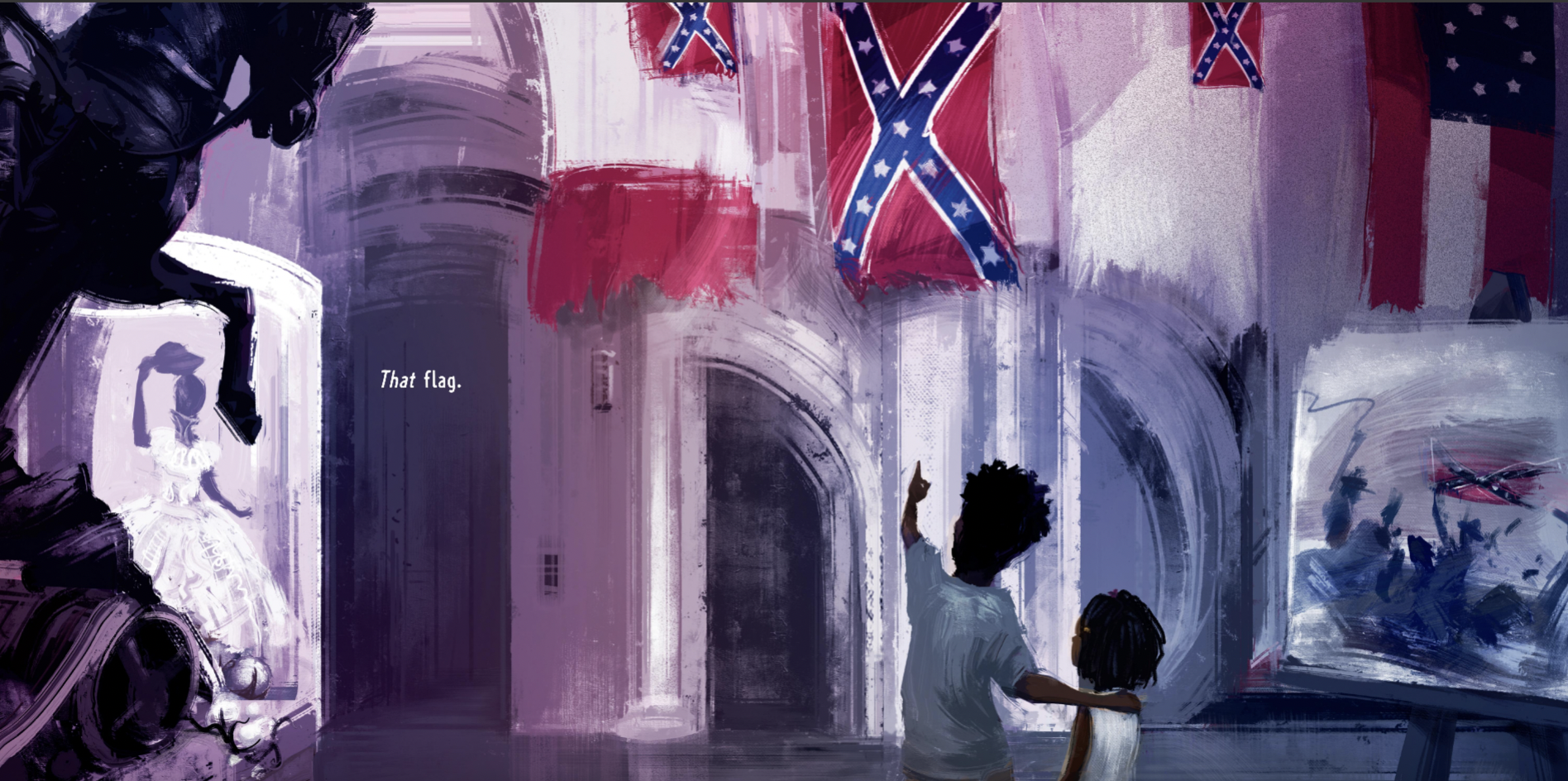That Flag: An Interview with Tameka Fryer Brown
And now for something a little different.
I don’t know if you’re aware of it, but 2023 has already turned out to be a shockingly strong year for picture books. And nowhere is this more apparent than in Tameka Fryer Brown’s upcoming That Flag (out on shelves everywhere on January 31st). The story is written for a younger audience, but covers a topic I’ve really never seen before.
From the publisher:
An affecting picture book from Tameka Fryer Brown and #1 New York Times bestselling illustrator Nikkolas Smith (The 1619 Project: Born on the Water) that challenges the meaning behind the still-waving Confederate flag through the friendship of two young girls who live across the street from each other.
Bianca is Keira’s best friend. At school, they are inseparable. But Keira questions their friendship when she learns more about the meaning of the Confederate flag hanging from Bianca’s front porch. Will the two friends be able to overlook their distinct understandings of the flag? Or will they reckon with the flag’s effect on yesterday and today?
In That Flag, Tameka Fryer Brown and Nikkolas Smith graciously tackle the issues of racism, the value of friendship, and the importance of understanding history so that we move forward together in a thought-provoking, stirring, yet ultimately tender tale.A perfect conversation starter for the older and younger generations alike, this book includes back matter on the history of the Confederate flag and notes from the creators.
Ms. Brown was kind enough to take some questions from me, and truth be told I had a lot of them about this book. Wouldn’t you?:
Betsy Bird: Ms. Brown, thank you so much for joining me here today. Historically, when a picture book wants to confront racist imagery it sets its story in the past. A Taste of Colored Water by Matt Faulkner, for example, which looked at segregated drinking fountains. And when those are the only books available to children, white kids can come away from them believing that racism was just that. Historical. Creating a book in the present day is the harder option. How did the idea of That Flag come to you?
ADVERTISEMENT
ADVERTISEMENT

Tameka Fryer Brown: The idea for That Flag was born out of shock, anger, and distress in 2015, after the racially motivated murders of nine congregants at Emanuel AME Church in Charleston, South Carolina, by a Confederate flag-flaunting white supremacist who admitted that his goal was to start a race war. During a conversation with author Donna Earnhardt about both the horrific killings and the emotional pain inflicted by that flag, she suggested there might be a children’s story somewhere in all the thoughts I had been expressing. That resonated with me, and I immediately started contemplating how I could craft it as a picture book.
The fact that people were still debating whether the Confederate flag was a racist emblem or an innocuous symbol of Southern pride, that so many adults were either ignorant of or in willful denial about its problematic history and harmful present use, convinced me it was essential to share more information about it with our children—our future adults—and as early as possible.
BB: Maybe this is just my own personal perception, but since there haven’t been any other books like this one before, I have to ascribe a certain level of fear on the part of the publishers in the past in tackling this subject matter. Did you have any difficulty selling the title? Do you feel there’s a readiness for these stories that there might not have been before?

TFB: No editor was willing to buy it in 2015. A couple of them suggested that I think about rewriting it as a middle grade, which I considered, but I was and still am convinced that the longer we wait to broach these kinds of subjects with our kids, the harder it will be for them to preserve that innate penchant for fairness and compassion humanity needs not only to thrive, but at this point it seems, to survive. My head considered ways to rewrite the story for older kids, but my heart was convinced it was supposed to be a picture book. I put it aside and worked on other projects.
In 2020, the tide turned. America was in the throes (supposedly) of its “racial awakening.” Another author friend, Kelly Starling Lyons, who had championed the story from the beginning, asked about when I had last submitted it. “I think it’s time,” she said. I revisited the manuscript and, with the help of my current agent, Marietta B. Zacker, tweaked it a little before sending it out again. This time, multiple editors expressed interest and we ended up in a bidding situation.
Now it’s 2023 and we find ourselves in a backward-sliding society, fighting to protect literary access and accuracy in our schools and libraries nationwide. Do I think there’s a readiness for this story today that might not have existed before? I do. I still do. I believe there are still more people in our country who value truth, who realize information is power, that knowledge begets understanding, and understanding begets growth and positive change; people who want every new generation to grow more compassionate and less racially biased than the ones which have come before. I believe enough of us are ready that this book can make a difference.

BB: In the story our heroine doesn’t understand at the beginning why she can’t go to the house of her best friend, Bianca, just because her family flies a Confederate flag in their front yard. Throughout the course of the book she learns the history of that flag and of Black history. What really impressed me about the book was that it isn’t concerned with making Bianca feel okay about this stuff. Bianca does have her own awakening but that’s not this story. It makes the finish more complicated but more believable. Did you struggle at all with finding a satisfying but realistic ending to the book?
TFB: From the start, I knew the story needed to be more open-ended. Throughout the revision process, I worked hard to find the right combination of words that would achieve the impact I was going for, but I always knew that this wasn’t the kind of book that could or should be tied up in a neat, happily-ever-after bow. The whole point of my writing it was to reveal the truth about how racism—and the public celebration of racist emblems like the Confederate flag—makes us feel. And the truth is, reconciliation after heartbreak is not a quick and easy process. It is achievable but requires intentionality. My goal was to write an ending that offered hope, but in a realistic way. I appreciate the feedback that you found it satisfying.
BB: I did indeed. But did the story come to you fully formed or did it take a fair amount of revision to get the tone and contents right?
TFB: I’m a pantser so for me, writing is always an ongoing puzzle-ing and tinkering with words. Even after publication, I tend to have diction regrets. But when I compare the original version that went on submission in 2015, the version that sold in 2020, and the story that’s now being released, I am pretty amazed at how much of the narrative thread remains the same. I do have to give a huge shout out to my editor, Luana Horry, for challenging me to be as bold and brave with my choices as I needed to be.

BB: You write in your Author’s Note, “I believe in telling kids the truth, even about things that are sad or are a little bit scary.” How do you find that balance between truth and scary reality when writing for younger children?
TFB: When my kids were small, I realized I had a knack for simplifying concepts in a way that they could easily understand. No topic was off limits, and I entertained as many follow-up questions as they wanted to ask. I try to approach writing for children the same way—with honesty, clarity, respect, and love. With That Flag, I wanted to tell enough truth so that readers would understand the story and empathize with the characters, but also leave enough space for them to ask deeper questions or offer critical insights at their own level. If there is one thing kids are naturally skilled at, it’s asking questions and critical analysis. It’s why I have so much faith in them to change the world.
BB: Was any of this book autobiographical or based on the story of anyone you know?
TFB: No…and absolutely. As a Black woman who has lived in America all her life, specifically the South, everything about That Flag is based on my lived experience in some way.
ADVERTISEMENT
ADVERTISEMENT
BB: Authors only sometimes have a say in the illustrators of their books. Were you aware of Nikkolas Smith and his work on stuff like the 1619 Project before he was paired with your manuscript? How do you feel his style adapts to the subject matter?
TFB: Nikkolas signed on to do That Flag before the 1619 Project was publicly announced, but I was aware of his viral paintings. When Luana mentioned his name as a potential illustrator, I was quick with the yes! Not only is he exceptionally talented, but as a self-identified artivist who seeks to inspire others to make positive change, he is brave! That bravery can be seen throughout all his Sunday Sketches, his illustrations in Born on the Water, and his visual storytelling in That Flag. He’s portrayed the emotional journey of Keira and Bianca with honesty, compassion, and optimism. I feel so blessed to have worked with him on this project.
BB: Finally, what are you working on next?
TFB: My next picture book will be YOU ARE: Ode to a Big Kid, illustrated by Alleanna Harris and published by FSG in 2024. It’s a lyrical ode to growing up and believing in yourself. There are a few other projects in the works, but nothing at the sharing stage yet.
I can’t thank Tameka enough for taking the time to answer all my questions today. That Flag is, as I say, out on shelves on January 31st. I think it’s safe to say that you will NOT want to miss it.
Filed under: Best Books, Best Books of 2023, Interviews
About Betsy Bird
Betsy Bird is currently the Collection Development Manager of the Evanston Public Library system and a former Materials Specialist for New York Public Library. She has served on Newbery, written for Horn Book, and has done other lovely little things that she'd love to tell you about but that she's sure you'd find more interesting to hear of in person. Her opinions are her own and do not reflect those of EPL, SLJ, or any of the other acronyms you might be able to name. Follow her on Twitter: @fuseeight.
ADVERTISEMENT
ADVERTISEMENT
SLJ Blog Network
Should I make it holographic? Let’s make it holographic: a JUST ONE WAVE preorder gift for you
Magda, Intergalactic Chef: The Big Tournament | Exclusive Preview
Fifteen early Mock Newbery 2026 Contenders
When Book Bans are a Form of Discrimination, What is the Path to Justice?
Poetry Gateways, a guest post by Amy Brownlee
ADVERTISEMENT








I will definitely want to experience THAT FLAG. I thank you for sharing this interesting interview with us today and appreciate the timing . . . just a few days before publication.
Thank you for sharing about the book and the interview. It’s a necessary book. Last summer I tried to explain to my 8-year-old why I had a strong reaction to seeing a confederate flag outside a house (not many are visible where we live). Will definitely be sharing this book with my kids.